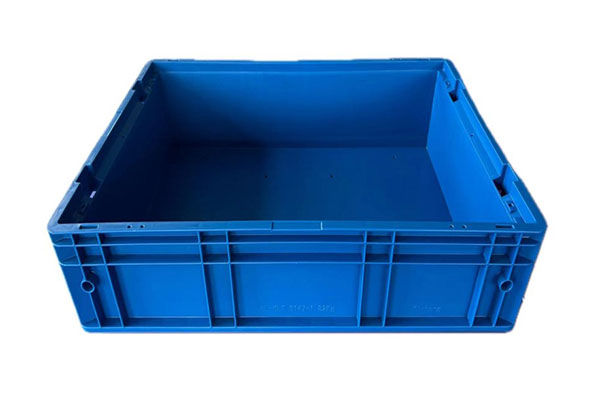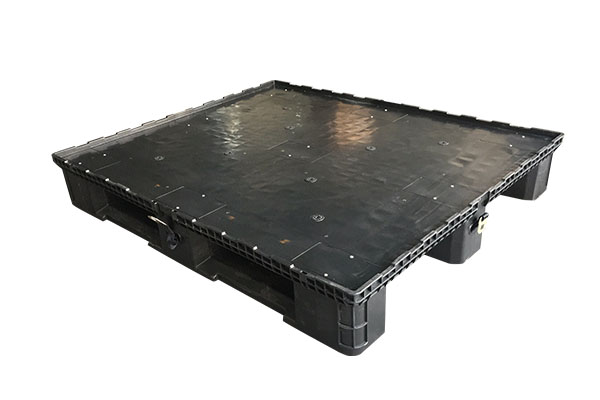How does plastic shell enhance the impact resistance of products?
Release Time : 2025-06-03
Plastic shell plays a key role in improving the impact resistance of small household appliances. Although plastic is generally considered a relatively soft material, through advanced material selection and manufacturing processes, plastic shell can significantly enhance the durability and reliability of products, ensuring that they can withstand the impact of accidental falls or collisions in daily use.
First of all, the choice of materials is the basis for determining the impact resistance of plastic shell. The modern plastics industry provides a variety of high-performance polymers, such as polycarbonate (PC), acrylonitrile-butadiene-styrene copolymer (ABS) and their composites. These materials are known for their excellent mechanical strength and toughness, and are not easy to break or deform when subjected to external impact. For example, polycarbonate has extremely high impact strength and can maintain structural integrity even under extreme conditions; while ABS is widely used in various household appliances for its good processing performance and impact resistance. By carefully selecting the right combination of materials, manufacturers can provide products with a solid protective layer that effectively resists various physical damages in daily life.
Secondly, the manufacturing process is also crucial to improving the impact resistance of plastic shell. Injection molding technology can not only realize the design of complex shapes, but also ensure the consistency and uniformity of the internal structure of the product, thereby improving the overall strength. In addition, some advanced molding methods such as two-color injection and insert molding allow materials with different characteristics to be combined in the same part, further enhancing the durability of the product. For example, adding reinforcing fibers or particles to key parts that are susceptible to impact can significantly improve local impact resistance without increasing weight. This refined design concept enables plastic shell to provide excellent protection while meeting aesthetic needs.
Furthermore, surface treatment is also an important part of enhancing the impact resistance of plastic shell. Through special coatings or surface modification technologies, plastics can be given better wear resistance and impact resistance without affecting the appearance. For example, some nano-level coatings can not only increase the surface hardness, but also form a buffer film. When a collision occurs, this film can absorb and disperse part of the energy and reduce the direct impact on the substrate. In addition, matte treatment or texture design can not only improve the feel, but also hide small scratches to a certain extent, extending the aesthetic life of the product.
It is worth noting that the design flexibility of plastic shell also provides more possibilities for improving impact resistance. Designers can optimize the thickness distribution and rib layout of the shell according to the specific purpose of the product and the expected use environment. For example, appropriate thickening at the edges and corners that are prone to impact and setting a reasonable transition area can effectively disperse the impact force and prevent damage caused by stress concentration. At the same time, the rounded corner design can not only avoid harm to the human body, but also help disperse external impact and reduce the risk of local damage. This humanized design consideration not only improves the safety of the product, but also enhances its practical value.
In addition, with the advancement of technology, the application of smart materials has also brought new breakthroughs to plastic shells. For example, self-healing materials can automatically restore to their original state after tiny scratches appear, greatly extending the service life of the product. Although this type of material is currently mainly used in the high-end market, it has great potential and is expected to become one of the mainstream trends in the future. By incorporating these cutting-edge technologies into traditional plastics, manufacturers can develop tougher and more durable products and provide consumers with a longer-lasting use experience.
In addition to the above technical means, strict testing and quality control are also an indispensable part of ensuring that plastic shells have excellent impact resistance. During the production process, each batch of products needs to undergo a series of rigorous tests, including but not limited to drop tests, impact tests, and temperature cycle tests, to verify their performance under actual use conditions. Only products that have passed all tests can enter the market, ensuring that every user gets a refined product.
Finally, the increasing awareness of environmental protection has prompted manufacturers to consider the recyclability and sustainability of materials while pursuing performance. Many new plastics not only have excellent physical properties, but are also easy to recycle and reuse, reducing the impact on the environment. This green design concept not only conforms to the values of modern society, but also wins more consumers for the brand. By choosing environmentally friendly plastic materials, companies can not only fulfill their social responsibilities, but also stand out in the fierce market competition.
In summary, plastic shell has significantly improved the impact resistance of small household appliances through various methods such as material selection, manufacturing process, surface treatment, design optimization, intelligent material application, and strict testing process. It is not only the first line of defense to protect internal components from external damage, but also an important factor in improving user experience and extending product life. With the continuous development and innovation of technology, we have reason to believe that plastic shell will show its unique charm in more fields in the future and bring more convenience and safety to people's lives.
First of all, the choice of materials is the basis for determining the impact resistance of plastic shell. The modern plastics industry provides a variety of high-performance polymers, such as polycarbonate (PC), acrylonitrile-butadiene-styrene copolymer (ABS) and their composites. These materials are known for their excellent mechanical strength and toughness, and are not easy to break or deform when subjected to external impact. For example, polycarbonate has extremely high impact strength and can maintain structural integrity even under extreme conditions; while ABS is widely used in various household appliances for its good processing performance and impact resistance. By carefully selecting the right combination of materials, manufacturers can provide products with a solid protective layer that effectively resists various physical damages in daily life.
Secondly, the manufacturing process is also crucial to improving the impact resistance of plastic shell. Injection molding technology can not only realize the design of complex shapes, but also ensure the consistency and uniformity of the internal structure of the product, thereby improving the overall strength. In addition, some advanced molding methods such as two-color injection and insert molding allow materials with different characteristics to be combined in the same part, further enhancing the durability of the product. For example, adding reinforcing fibers or particles to key parts that are susceptible to impact can significantly improve local impact resistance without increasing weight. This refined design concept enables plastic shell to provide excellent protection while meeting aesthetic needs.
Furthermore, surface treatment is also an important part of enhancing the impact resistance of plastic shell. Through special coatings or surface modification technologies, plastics can be given better wear resistance and impact resistance without affecting the appearance. For example, some nano-level coatings can not only increase the surface hardness, but also form a buffer film. When a collision occurs, this film can absorb and disperse part of the energy and reduce the direct impact on the substrate. In addition, matte treatment or texture design can not only improve the feel, but also hide small scratches to a certain extent, extending the aesthetic life of the product.
It is worth noting that the design flexibility of plastic shell also provides more possibilities for improving impact resistance. Designers can optimize the thickness distribution and rib layout of the shell according to the specific purpose of the product and the expected use environment. For example, appropriate thickening at the edges and corners that are prone to impact and setting a reasonable transition area can effectively disperse the impact force and prevent damage caused by stress concentration. At the same time, the rounded corner design can not only avoid harm to the human body, but also help disperse external impact and reduce the risk of local damage. This humanized design consideration not only improves the safety of the product, but also enhances its practical value.
In addition, with the advancement of technology, the application of smart materials has also brought new breakthroughs to plastic shells. For example, self-healing materials can automatically restore to their original state after tiny scratches appear, greatly extending the service life of the product. Although this type of material is currently mainly used in the high-end market, it has great potential and is expected to become one of the mainstream trends in the future. By incorporating these cutting-edge technologies into traditional plastics, manufacturers can develop tougher and more durable products and provide consumers with a longer-lasting use experience.
In addition to the above technical means, strict testing and quality control are also an indispensable part of ensuring that plastic shells have excellent impact resistance. During the production process, each batch of products needs to undergo a series of rigorous tests, including but not limited to drop tests, impact tests, and temperature cycle tests, to verify their performance under actual use conditions. Only products that have passed all tests can enter the market, ensuring that every user gets a refined product.
Finally, the increasing awareness of environmental protection has prompted manufacturers to consider the recyclability and sustainability of materials while pursuing performance. Many new plastics not only have excellent physical properties, but are also easy to recycle and reuse, reducing the impact on the environment. This green design concept not only conforms to the values of modern society, but also wins more consumers for the brand. By choosing environmentally friendly plastic materials, companies can not only fulfill their social responsibilities, but also stand out in the fierce market competition.
In summary, plastic shell has significantly improved the impact resistance of small household appliances through various methods such as material selection, manufacturing process, surface treatment, design optimization, intelligent material application, and strict testing process. It is not only the first line of defense to protect internal components from external damage, but also an important factor in improving user experience and extending product life. With the continuous development and innovation of technology, we have reason to believe that plastic shell will show its unique charm in more fields in the future and bring more convenience and safety to people's lives.







